
Google’s most expensive phone was the last to hit the market, but now, some three months later, just what is it like to live with the Pixel 9 Pro Fold? This is our longer-term look at the latest folding Pixel phone.
Launching alongside, but going on sale later than the Pixel 9 series means that there’s a bit of separation in both pricing and availability. If you’ve held out so far, then you are probably looking at some discounted Pixels and wondering if the folding one is the right fit. To help with that decision it’s worth taking a look at our detailed 2024 Pixel Buyer’s Guide to help drill down in the details. If you just want to know what the deal is with the 9 Pro Fold, then read on…
Table of contents
Hardware and design
I’ll admit that I didn’t spend a whole heap of time with the original Pixel Fold until earlier this year. It wasn’t even on my radar as a potential purchase – until I was given one by my colleague Andrew Romero. I trialed it for a few weeks before the Pixel 9 Pro Fold launch, but there were too many little irksome problems that made me wary of the upcoming folding phone.
Maybe I shouldn’t have stressed too much because the follow-up has practically re-invented the hardware in all of the best ways. I’ll stop short of reiterating Ben Schoon’s sentiment that this is the best foldable design for most people. I think the Honor Magic V3 edges it slightly, but it’s a very nice slab when folded or a firm wafer-thin panel when unfolded. To me, Google has done a great job of hiding a tablet in a phone form factor.
I couldn’t get the Porcelain color, so I opted for the Obsidian and the matte frame and backplate combination has stolen my heart. It just looks so much better than the shiny sides of the Pixel 9 Pro. Maybe this was the plan all along? To have the highest value device be the only Pixel 9 series handset to receive the full matte treatment. It looks incredible in person.
I initially used a case, but many people have issues with screen protectors on the front display, so I picked up a skin instead. Side note: Given its niche market position, there are justn’t many great-quality accessories for this phone. As such, I’m being super careful and trying not to put the phone in precarious situations.

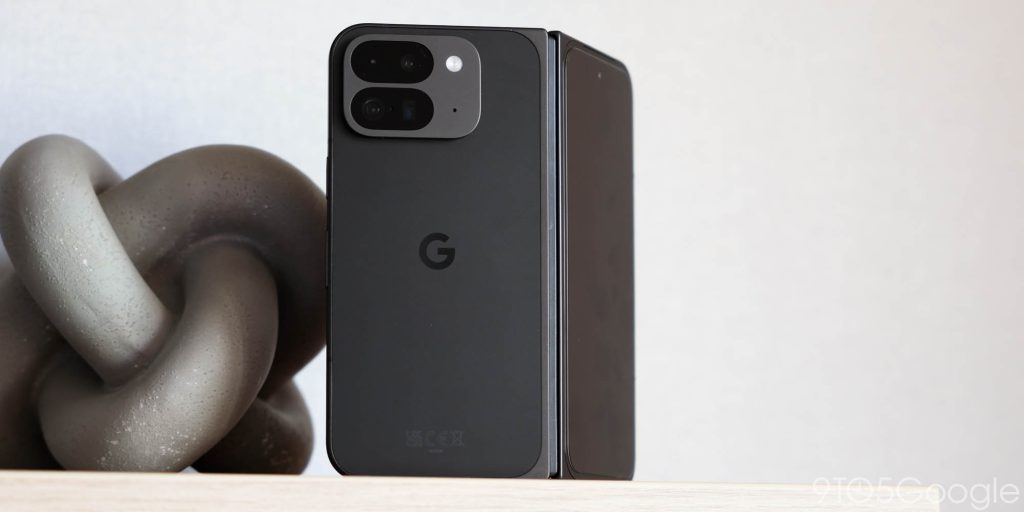
On a recent beach vacation, I simply ditched the Fold in favor of the Pixel 9. One grain of sand in the folding mechanism could spell disaster and that is something you don’t easily forget. Plus, the lesser IP rating has always played on my mind, being from a fairly rainy nation. I’m privileged enough to have a backup, but despite claims from practically all the foldable makers on how durable their devices are, I still don’t quite trust these, even after using them for an extended period. Don’t get me wrong, it’s very solid and sturdy and despite being ultra-cautious, I will say that the Pixel 9 Pro Fold is a tougher cookie than I expected. No major marks or dings…yet.
I’ll also add that the inner screen is a bit of a smear magnet. The bonus here is that it hides these well because it gets super bright and clear. It’s easily one of the best foldable displays I’ve ever had the pleasure of using. I think it just highlights how good Google is at tuning a phone screen. I’m actively using my phone more because of the larger size and the gorgeous screen. It’s a two-fold bonus.
One thing that I found myself really enjoying is the power button fingerprint scanner. It’s incredibly reliable and way faster than the in-display scanner on any Pixel I’ve used. The only downside is that I reach into my pocket and accidentally unlock with my thumb quite regularly. I set auto-lock to 1 minute to try and mitigate. I also think that while it’s great, it’s limiting because only a few of your fingers are suited to unlocking your phone.
The speakers and haptic feedback have been a real step down and apparent to me—a haptic aficionado—right from the get-go. I still love the vibration-based feedback, but due to the thinner profile, you just don’t get the oomph that other Pixels can provide. The same goes for booming audio. This helps highlight the compromises that have to be made to accommodate what is effectively two devices in one chassis.
Software
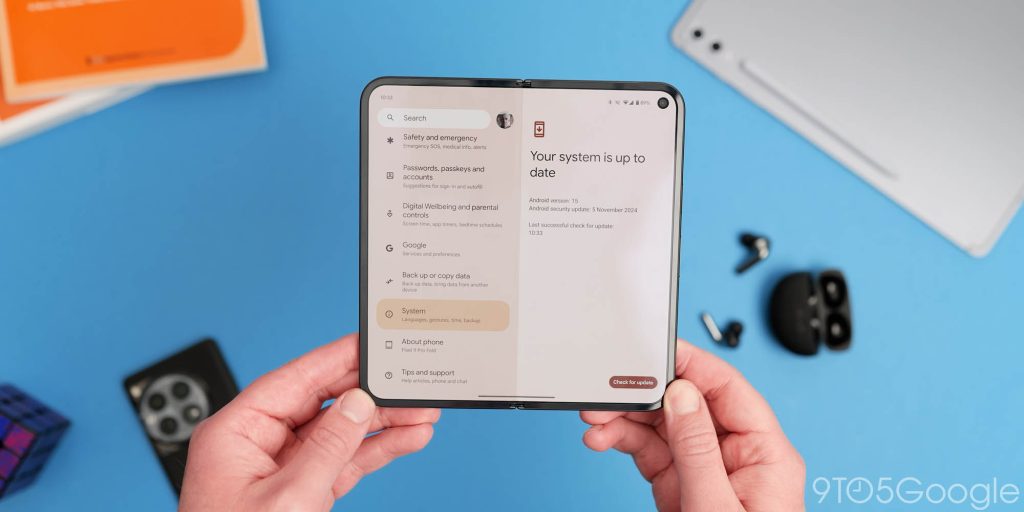
A foldable needs to have more than just the ability to open two apps side-by-side by default. This is one of the major frustrations with the Pixel 9 Pro Fold as a multi-tasking device. For most people, this won’t even be an issue, but it feels like a missed opportunity for Google not to add some form of multi-window solution in Android 15 on the one device that feels catered to the people who would undoubtedly use such a function.
Not all apps like being side-by-side. Reddit is one example. It sometimes becomes unresponsive and rejects touches. On the other hand, I love that we get a pseudo-full-size Chrome experience with “proper” tabs. This makes using the web browser and putting tabs side-by-side so much more useful. When I’m shopping or searching, I can compare tabs, and that alone has been incredible for productivity.
Some other things are a little annoying. The dual-column Quick Settings panel isn’t all that useful to me. It puts toggles in a position that feels more out of reach. I honestly think the taskbar could be better utilized to have some form of Quick Settings integrated into it. While I would love one, I’m not explicitly asking for a DeX-like desktop mode; merely some accommodations that take better advantage of the larger inner screen. The device knows that the display is fully open, so the context isn’t exactly hard to determine.
These complaints apply to the Pixel Tablet too, which suffers from “big screenitis” and feels like it doesn’t quite have any true adjustments that make the larger usable surface area as useful as it could be. There still isn’t a “killer” feature for a Google foldable at this time. Pixel Weather is nicer with more information, but beyond that, I’m clutching at straws.
I’m treading old ground here. Lots of apps scale and look great, but some need a little more work to be considered “perfect” for the 1:1 aspect ratio. Even some of Google’s apps flip-flop due to the square shape. Some apps lose the sidebar unless you physically rotate the screen. I have a very love-hate relationship with eBay, in particular. It scales nicely on the Pixel Tablet but is a bit broken on the Pixel 9 Pro Fold due to the non-standard aspect ratio.
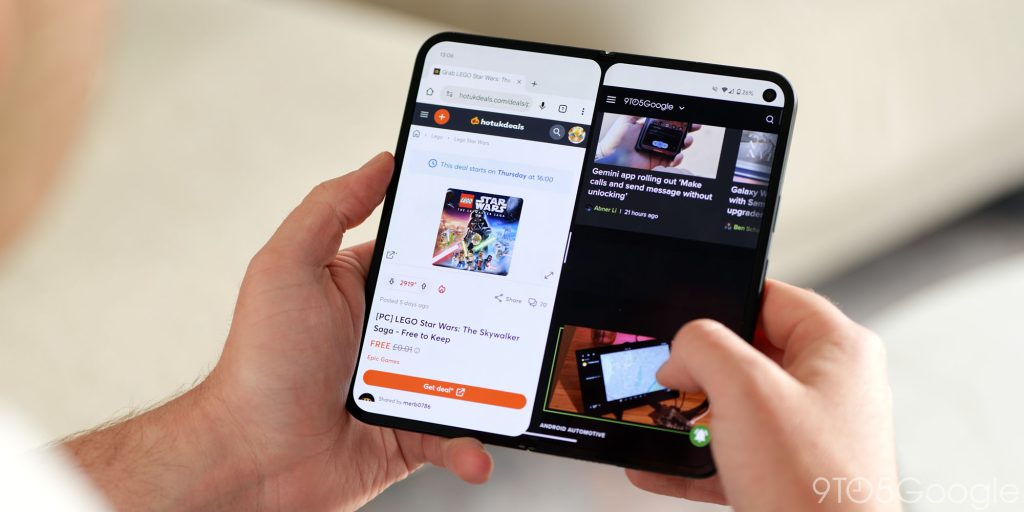
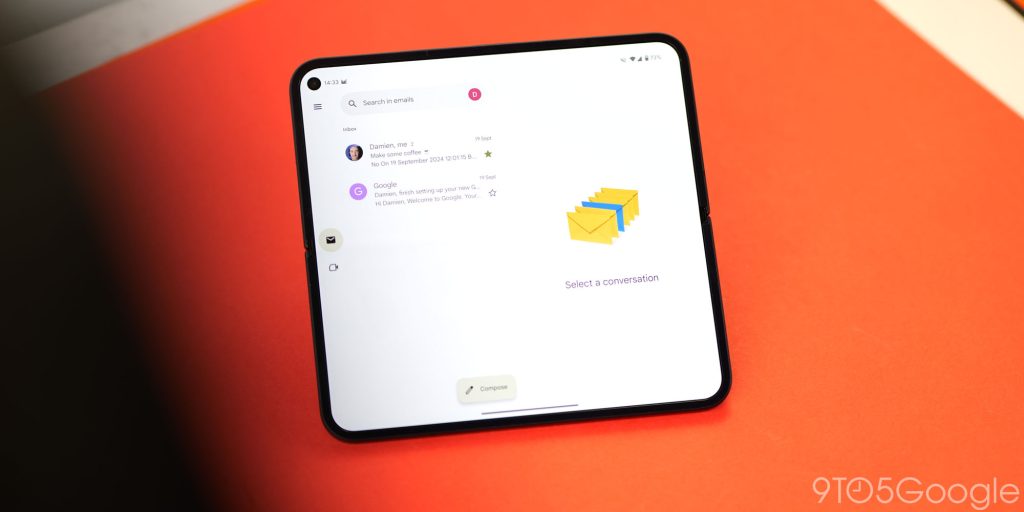
Another issue that I hadn’t anticipated was the need to refresh or resize some apps to get them working at all. I’m not sure where the blame lies here—individual app developers or Google. Frustration aside, I’ve found myself more engaged in apps I already spend too much time on and even some apps that I ordinarily hate on a small smartphone screen. LumaFusion has been so much nicer to use to make basic video edits on mobile, for example.
I’m painting a very negative picture here, but most apps work just fine, and it’s lovely to get more information on your screen because of the larger size. The best bit is that if it isn’t perfect on the inner display, just switch to the outer screen, and the problem is solved 99.9% of the time. This substantial nitpick doesn’t detract too drastically from the performance. I have had the exact same experience as any Pixel over the past couple of years – which is both a positive and a negative in equal measure.
Android 15 has improved performance, not drastically, but with an uplift. You know the deal: apps load quickly, zipping around is smooth, and it’s just the typically slick Pixel experience. I have found some things annoying in terms of UI, but overall, the “core” of this is still as good as you would expect from what is technically a first-party foldable.
I’m also very aware that $1,700 is too much to pay for a Tensor-powered phone. We should get top-tier performance at that price—no excuses. At this point, some people will be turned off by the Pixel 9 Pro Fold. I still haven’t felt like I need huge power overhead, but I’d be lying if I said I wouldn’t be happy to have a little more power for some futureproofing.
Battery and lifespan
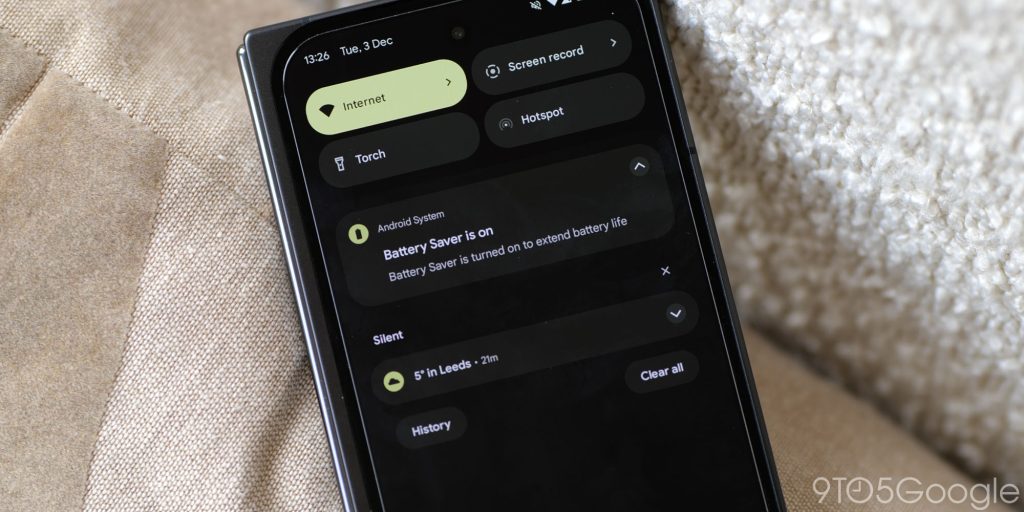
After a few months of usage, the Pixel 9 Pro Fold has likely fully learned my habits, and I’d call it a dependable companion. If I stick to the outer screen most of the day, its lifespan is practically identical to that of the regular Pixel 9. Is that enough? For me, yes. For you, maybe not. It’s around 6 hours of screen on time for what it’s worth.
Mixing the front and inner screen causes me to stress a little more, as I regularly end up in power-saving mode by 10-11 p.m. To that end, I have had it die overnight following a “regular” charging cycle—0 to 100% from bedtime to the morning. That was when I put it on my bedside table at 10% battery level, for what it’s worth.
I guess if you are solely using the inner display, you might have a very different experience entirely. Tensor seems way better at power management this year, and it’s practically impossible to say how you might get on, given how different everyone’s use cases can be.
The next iteration needs faster charging, though. I have found 21W wired charging just takes a long time compared to all of my other devices. This is especially pronounced after months of poor 7.5W wireless charging.
Camera
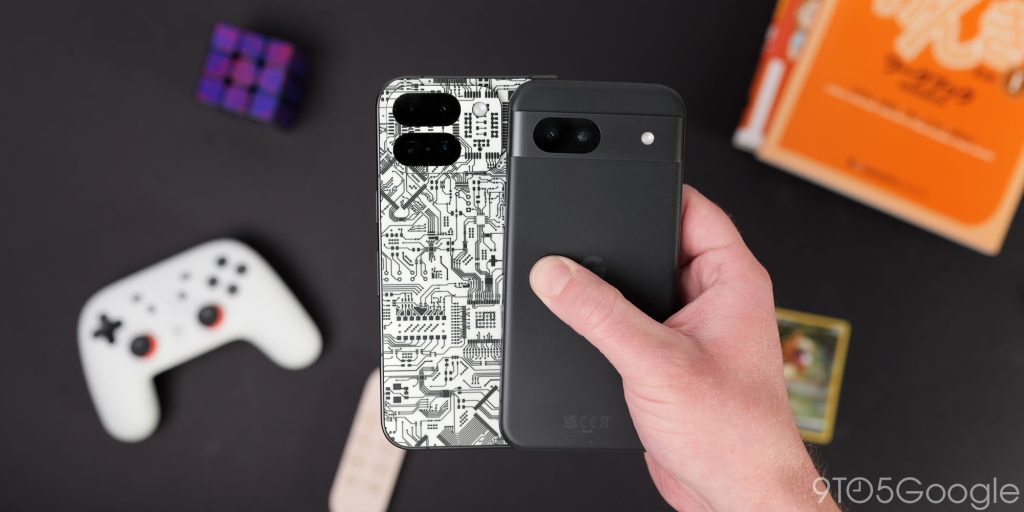
I like the camera on the Pixel 9 Pro Fold. Effectively, I see it as the Pixel 8a system with a telephoto tacked on. Being real for a second, that system is still great for taking photos, but considering we miss out on tons of other features like 8K video or 20x Super Res Zoom when recording, it’s a big, bitter pill to swallow. There is a minor decrease in image fidelity coming directly from the Pixel 9 and 9 Pro XL. From another phone, it’s harder to say what you’ll think with the Fold’s camera capabilities.
The extra megapixels and larger sensor on the slab phone Pixel 9 devices just add a little extra to my eye. That’s most noticeable with a tad more noise and decreased dynamic range, but overall, you’ll get those punchy Pixel images just with a tad less detail.
I’m not frustrated; put it that way. However, I would have loved Google to add a bit of thickness to try to slip the full-fat Pixel 9 Pro camera system into a folding form factor. It wouldn’t hurt Google to at least try it on the next iteration.
Something I hadn’t anticipated is how the inner selfie camera position shift affects the way you take or make video calls. The upper right positioning is just awful, so I stick to the front screen instead for calling, and for the odd time, I take a “sensible” selfie.
One feature I never thought I’d use but have found to be a killer addition is “Made You Look.” Some of my close friends have young kids, and this has been one of those real-world features that actually works. Getting a 6-month-old to pay attention to the camera was amazing, and it made taking a family photo—something I’m sure lots of parents love to have more of—a breeze, as everyone was paying attention at the same time.
The best way to describe how I feel about the Pixel 9 Pro Fold camera system is content. You have enough flexibility to cover most bases, but it’s hard not to want a little more.
Final thoughts
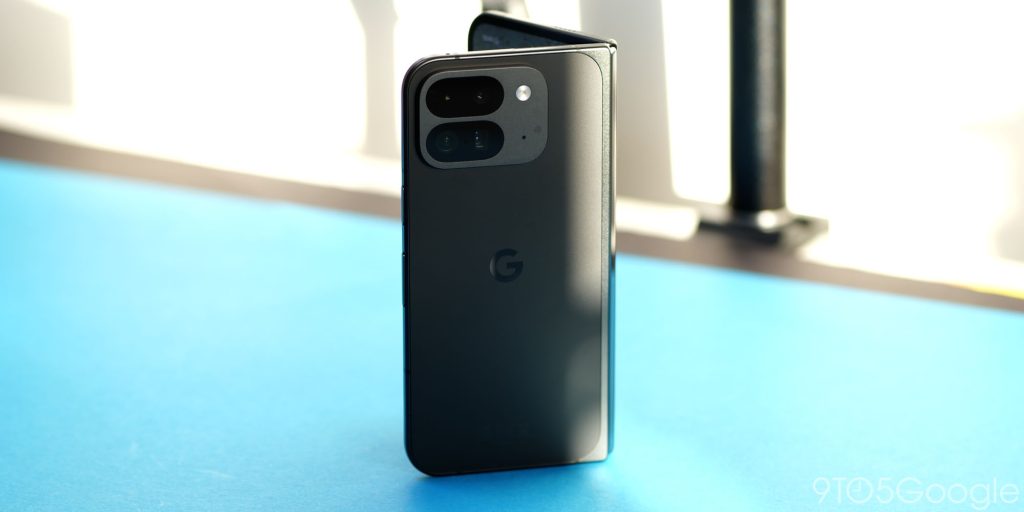
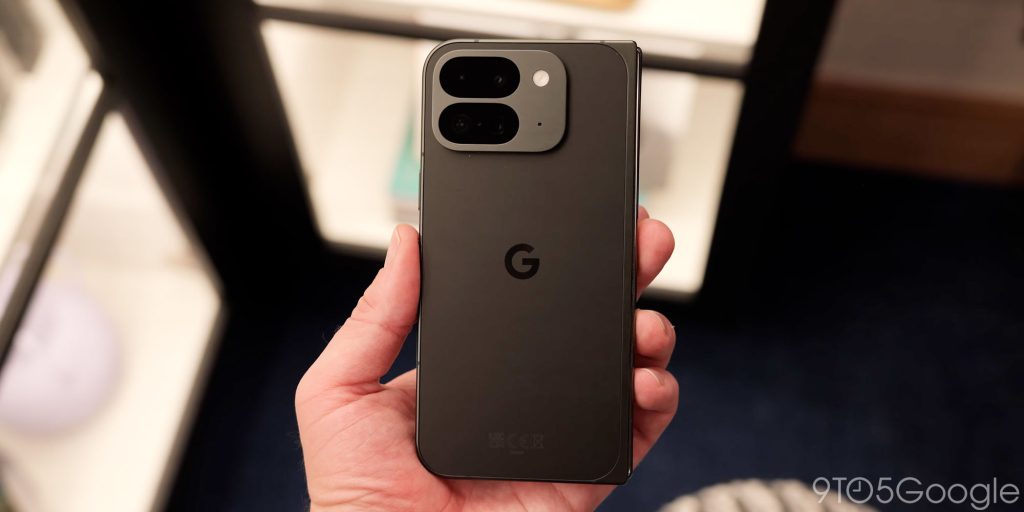
The Pixel 9 Pro Fold is not a phone that you can recommend to everyone. It’s for true-blue nerds—those of us who have salivated at the prospect of a dual-purpose device that is simultaneously a phone and a tablet in one compact package.
My only problem is that while you get a lot of what makes the Pixel 9 series a sizable forward step, you’re getting the middle ground in all areas. No, it doesn’t have the outright best display or camera system, and you don’t get class-leading battery longevity either. Given that it’s almost $2,000, it’s a big financial outlay for the “middle.”
We all know that the real appeal is the changing form factor. Does an extra screen instantly make it “Pro” with all these other compromises due to the changing shape? I’m not so sure, but all foldable phones are still in a strange market position as none offer the objective “best” hardware for the higher asking price.
Having used practically every Google Pixel phone—and especially in recent years—I’ve come to realize that the lineup is increasingly more than just a sum of their parts. The Pixel 9 Pro Fold probably exemplifies that more than any phone I have ever used. Deep down, I should prefer using the Pixel 9 Pro or Pro XL. The thing is, I have kept coming back to this dual-form foldable phone and it’s hard to truly explain why.
Honestly, I don’t think it’s worth it for most buyers unless – like me – you fall into the aforementioned tiny sliver of people who must have the shinest trinket.
The Pixel 9 Pro is still the best in the lineup because it covers many bases and doesn’t compromise as much as the Fold. It’s also $700 cheaper, which gives you some wiggle room to pick up more accessories like earbuds, a watch, or even a standalone tablet if you want a big screen to boot.
Even so, there’s something hard to quantify about the Pixel 9 Pro Fold that you won’t be aware of until you try it for yourself. After a few months, the sheen has not dulled.
Where to buy the Pixel 9 Pro Fold
FTC: We use income earning auto affiliate links. More.



Comments